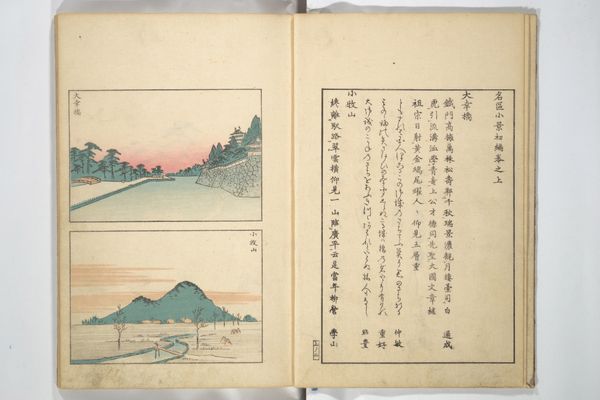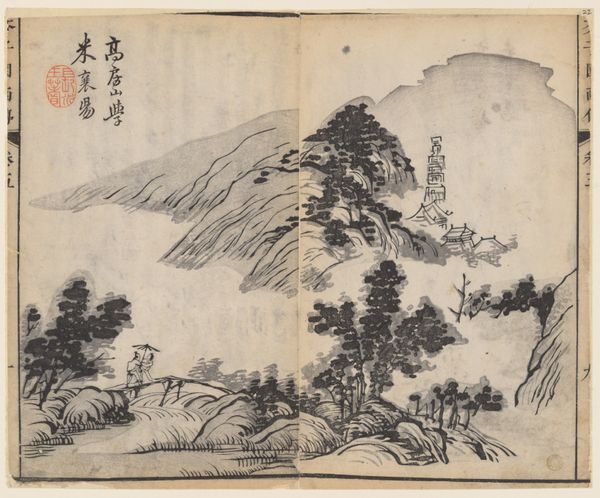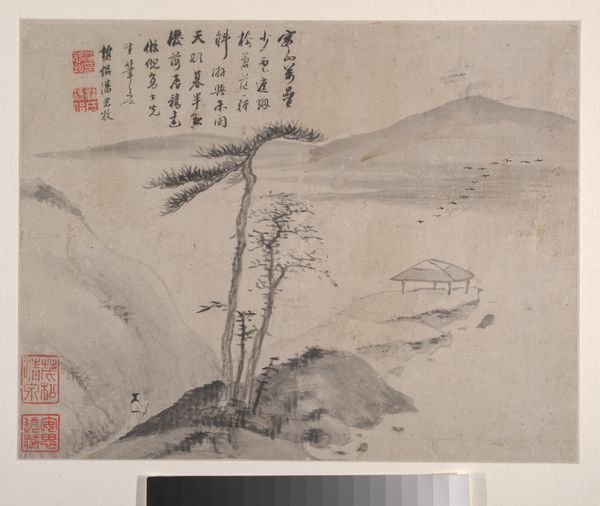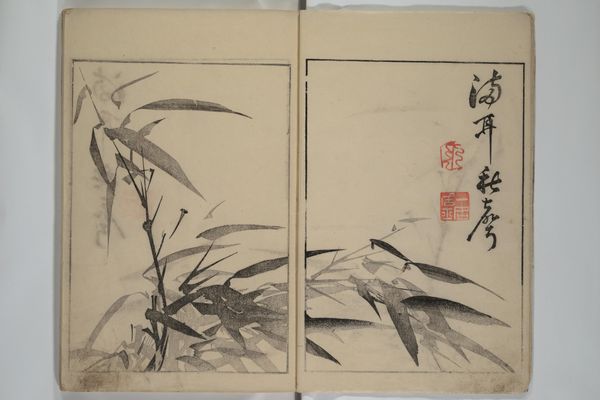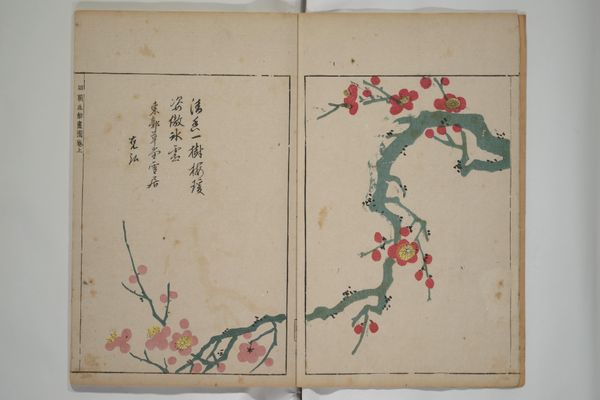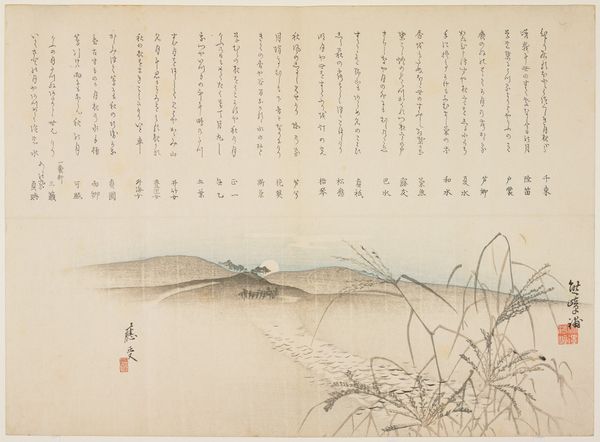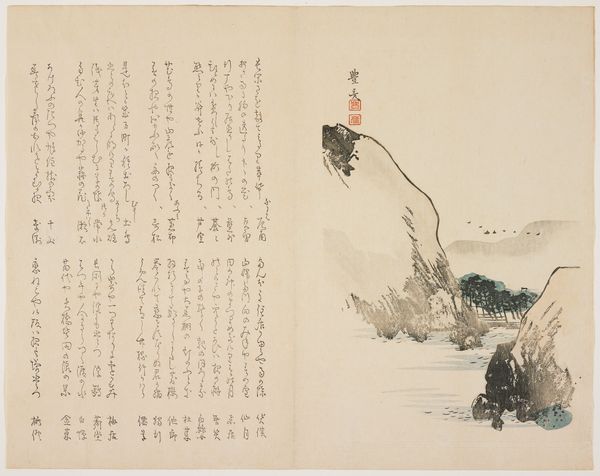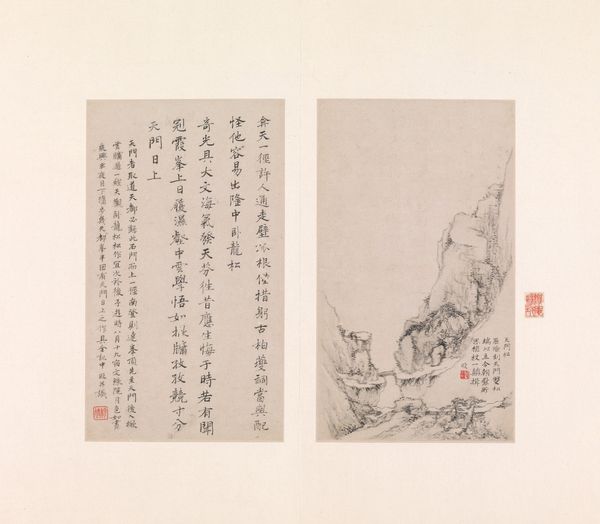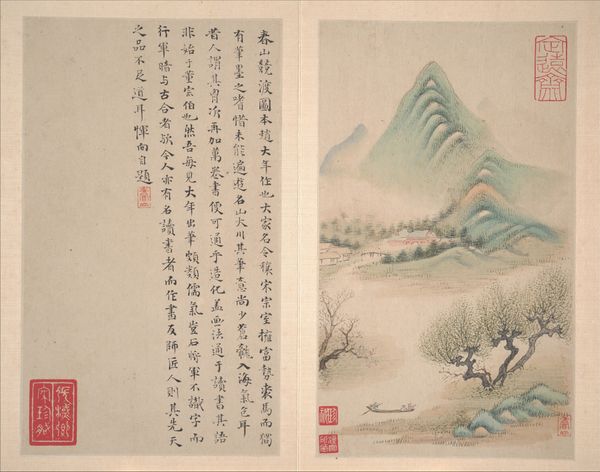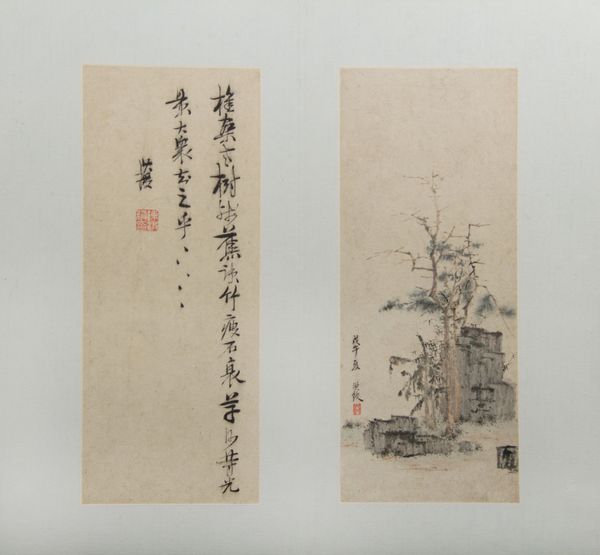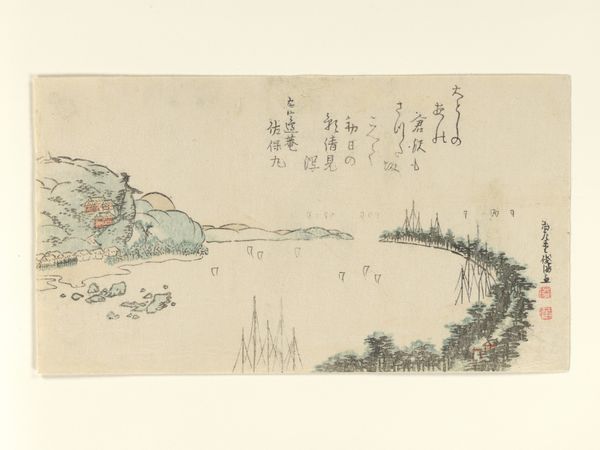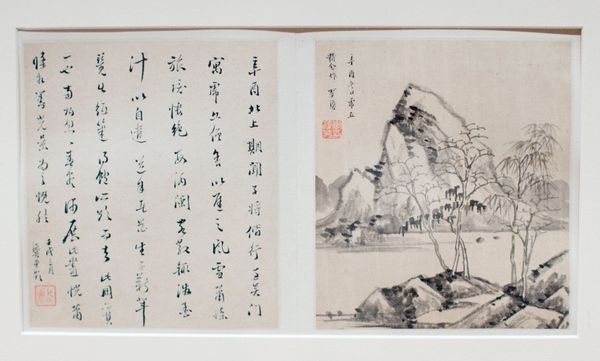
drawing, watercolor
#
drawing
#
asian-art
#
sketch book
#
landscape
#
ukiyo-e
#
watercolor
#
coloured pencil
Dimensions: each: 10 3/16 × 6 11/16 in. (25.8 × 17 cm)
Copyright: Public Domain
Editor: So, this is Nukina Kaioku's "Gathering of the Jewels," created in 1861. It’s a watercolor and colored pencil drawing. It reminds me of a tranquil little cove. How do you interpret this work, considering the techniques the artist employed? Curator: The formal structure of the work is compelling. Notice how the artist divides the composition. On the left, we observe a detailed landscape scene, and on the right, the balance of the drawing is offset by the calligraphic script. What do you notice about the tonal variations in each panel? Editor: Well, the landscape seems more airy with very delicate coloration, particularly with the foliage, whereas the text panel feels almost like a solid, dark mass in comparison. Curator: Precisely. That contrast directs our visual reading. Kaioku forces us to analyze the relationship between form and script. The lines of the calligraphy, dense and vertical, create a different visual rhythm compared to the gentle slopes of the landscape. It explores pictorial depth using flat washes and then counteracts it. Editor: I see! So, it’s less about what is depicted, and more about how Kaioku used contrast, color, and line to construct the visual experience? Curator: Exactly. Observe the bridge, and how it intersects at precise diagonals. This use of space contributes to its dynamic arrangement. What seems tranquil on the surface contains a subtle yet sophisticated engagement of contrasting aesthetics. Editor: It’s funny, I didn’t consider the calligraphy as part of the artwork, more like a descriptive accompaniment. Now I see the tension. Curator: It's in the formal relationship. By studying its visual language, we have gained an insight into the dynamic dialogue of form in Kaioku’s work.
Comments
No comments
Be the first to comment and join the conversation on the ultimate creative platform.
